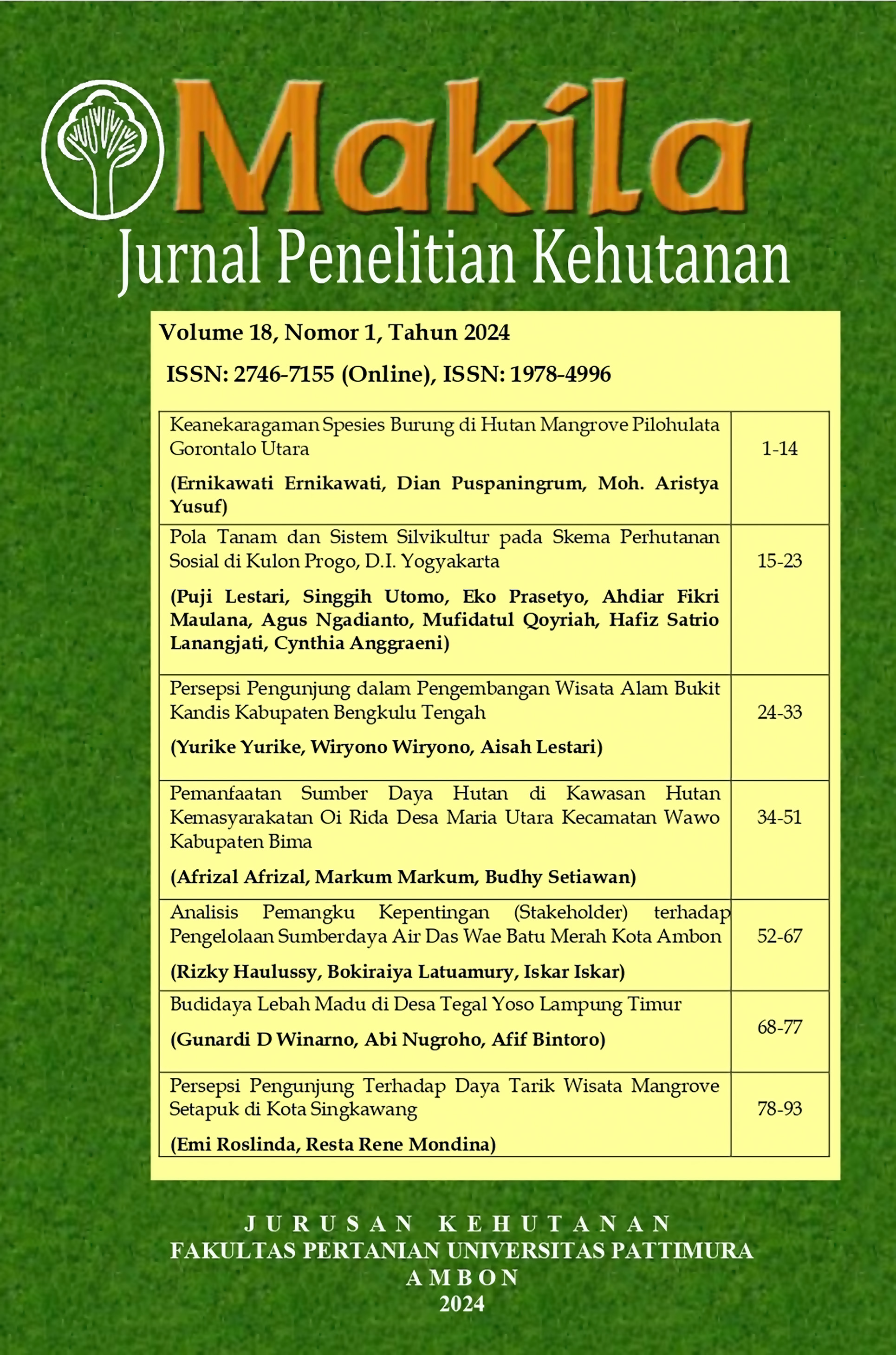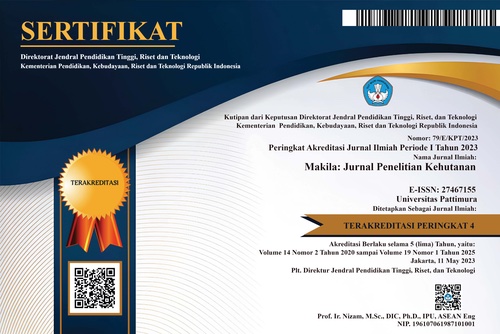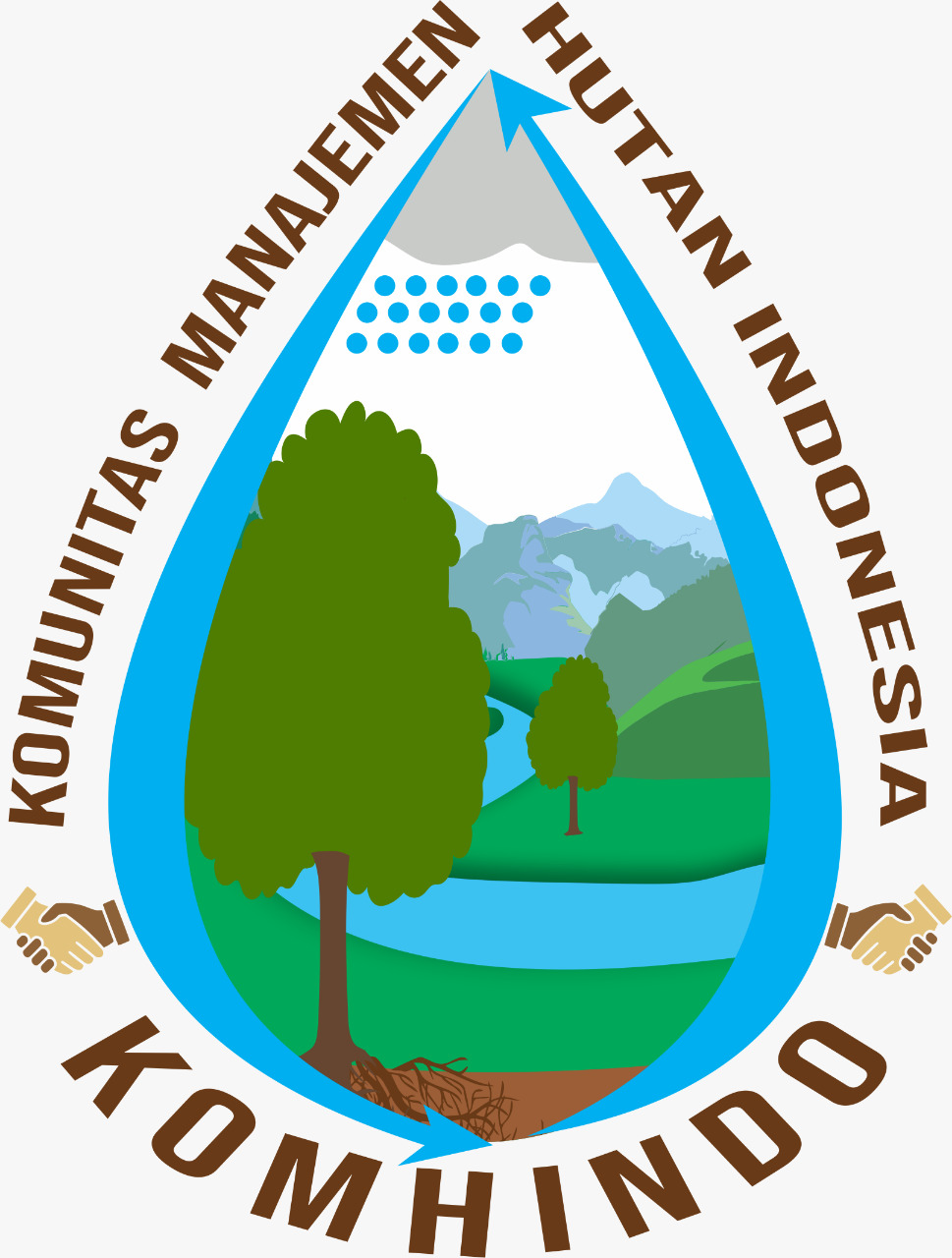KEANEKARAGAMAN JENIS KUPU-KUPU DI KAWASAN AIR TERJUN TIGA BIDADARI KECAMATAN WASILE TIMUR KABUPATEN HALMAHERA TIMUR
Abstract
Butterflies in nature provide benefits to the process of pollination and flower fertilization. Ecologically, it contributes to maintaining ecosystem balance and enriching biodiversity. The aim of this research is to identify the diversity of butterfly species in the Tiga Bidadari waterfall area and identify their food plants. The data collection method uses the Time Search method, namely an inventory method with observation plots not limited by a certain distance or area, but rather time (minutes). The data obtained will be analyzed using the Shannon-Wiener Diversity Index, relative abundance and dominance index. The research results showed that there were 15 species of butterflies ( 5 families ) namely, the Nymphalidae, Lycaenidae, Pieridae, Hesperiidae, and Papilionidae. The number of individuals is 90 individuals with a diversity index value of H' ꞊ 2.46 (medium diversity category). Based on the relative abundance of the species, Danaus genutia is the most common type of butterfly found in the Tiga Bidadari Waterfall area. A butterfly dominance index of 0.10 indicates that the butterfly species is not dominant. The food plants found consist of 12 types. The presence of butterflies in the Tiga Bidadari Waterfall area is influenced by food plants.
Downloads
Copyright (c) 2024 Fiya Anita, Asiah - Salatalohy, Abdul Kadir Kamaluddin

This work is licensed under a Creative Commons Attribution 4.0 International License.











